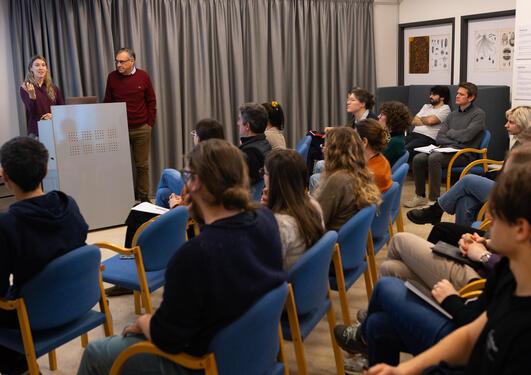Dr. Nicolas Minc, Institut Jacques Monod, France
Dr. Nicolas Minc, Group Leader at the Institut Jacques Monod, will present: "How Large Cells Do It: Cytoplasm Mechanics and Division Positioning"
Main content

Life for all animals starts with a stereotyped 3D choreography of reductive divisions that specify cells fates, developmental axis and overall morphogenesis of early embryos. These division geometries are specified from the subsequent position and orientation of mitotic spindles, which are commonly regulated by astral microtubules (MTs) that radiate from spindle poles and contact the cortex to apply forces that move and rotate spindles. However, in unusually large zygotes and early blastomeres, spindles are too small to contact the cortex, and appear to float in the cytoplasm. To elucidate the mechanics of spindle positioning, we used magnetic tweezers to displace and rotate mitotic spindles in live sea urchin embryos, and uncovered that the cytoplasm can impart viscoelastic reactive forces that move spindles, or passive objects with similar size, back to their original position. These forces hold spindles in the cell center, and are independent of cytoskeletal force generators, yet reach hundreds of piconewtons and scale with cytoplasm crowding. They increase with cell shape anisotropy, as a result of enhanced hydrodynamic coupling of the spindle with cell boundaries, which confers a stable centering precision to spindles as embryos develop. These findings suggest that bulk cytoplasm material properties constitute important control elements for the regulation of division positioning in early embryos and beyond.

